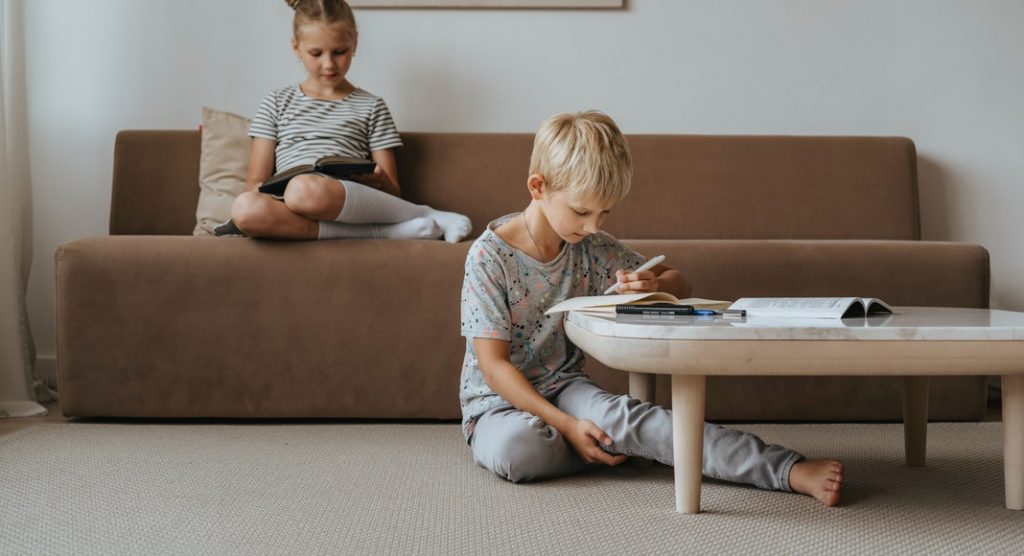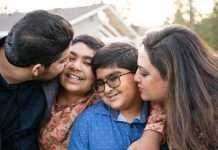 Editor’s Note: This is part 2 of 2 posts. Read part 1 here.
Editor’s Note: This is part 2 of 2 posts. Read part 1 here.
Books
I was a bookworm when I was in grade school and college so I happen to appreciate traditional learning with books. Alas, not all books are created equally, and in public school teachers are typically told what textbooks to use. History is a big one I’d like to touch on here. Homeschooling allows us to explore real history, the good our country and the world have done, and the other parts as well. I use Build Your Library for the core part of our learning. The author of the curriculum chooses books that aim for truth, age-appropriate understanding of concepts, and rich and colorful explanations.
Beyond Books
 Being particular about the books you read in homeschool is just one way to embrace the perks of your freedom. Another is exploring programs that your children would otherwise not have the opportunity or time to take if they were in public school. I took a single violin lesson before I had my children. The singular was never converted to the plural so I was inclined to get my daughter matched up with an instructor who made music his life’s work. Our public school’s version of music class was sometimes watching YouTube videos, but now my 9-year-old is actually putting bow to strings on her violin and making beautiful sound that does beautiful things for her mind and spirit, and I learn alongside her.
Being particular about the books you read in homeschool is just one way to embrace the perks of your freedom. Another is exploring programs that your children would otherwise not have the opportunity or time to take if they were in public school. I took a single violin lesson before I had my children. The singular was never converted to the plural so I was inclined to get my daughter matched up with an instructor who made music his life’s work. Our public school’s version of music class was sometimes watching YouTube videos, but now my 9-year-old is actually putting bow to strings on her violin and making beautiful sound that does beautiful things for her mind and spirit, and I learn alongside her.
There is it again: a win-win. And here comes another. Until recently—at least in our public school—technology seemed to be a bit understated. Some grade schools are beginning to catch on to the growing demand of data science knowledge for students emerging from 13 years of learning, but American schools as a whole are still behind on this upward global trend. When you homeschool you don’t need to wait for anyone to catch on to changes in society or education. If you recognize the value you can immediately find a way to harness it and incorporate it into your children’s lives, and yours, too.
I had always wanted to learn computer programming and there’s a big movement going on with girls and women learning to code and infiltrate the world of data science. As a mother to all girls, I felt this realm of knowledge was one I could no longer ignore. Enter Berkeley Coding Academy. They offer programming and data science classes for young people and adults alike, so while you’re expanding the minds of your children with such a program, you could also be growing your own and staying with the times in tech and maybe even exploring a new career for yourself.
One Spanish translation for “the blues” is melancholía. But my daughter wasn’t learning such words in that Spanish class. It was only kindergarten after all. She actually wasn’t learning much of anything in her class. Ah, good ol’ melancholy—pensive sadness is not a feeling I would expect to be present in kindergarteners. Nevertheless, the children in the class were required to face forward while watching Spanish videos projected on the wall like a light display at Disneyland (but not as fun of course), sit cross-legged for one hour, and should have carefully considered embracing a sudden case of the wiggles or daring to look at their neighbor at any point during this painful Tuesday ritual. It was painful for me and I was sitting in a chair just as an observer.
I’m no longer just an observer in the cafeteria or on Spanish-Tuesday. I brought education back home and in my own way.
Briana DeFranco homeschools three of her four children. She has moved around frequently due to her spouse’s line of work and thus has had experience with many public schools. She once thought she wasn’t capable of homeschooling, and now she can’t imagine not doing it. Briana is a freelance writer, knitter, sewist, and she believes there’s so much learning involved in day-to-day living…but she adores books too.






















